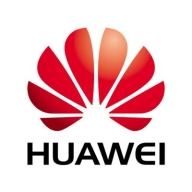

Huawei eSight and Elastic Observability compete in enhancing enterprise network management and monitoring capabilities. eSight appears advantageous in pricing and support, whereas Elastic stands out with its robust feature set for advanced functionalities.
Features: Huawei eSight offers comprehensive network monitoring with support for diverse devices, centralized control over heterogeneous environments, and clear performance visualization. Elastic Observability provides advanced data analytics, real-time insights into operational data, and extensive search capabilities.
Room for Improvement: Huawei eSight could enhance its data analytics capabilities, improve scalability for cloud-based infrastructures, and integrate more open-source solutions. Elastic Observability may improve tailored support options, streamline setup processes for enterprise environments, and optimize its pricing model for smaller enterprises.
Ease of Deployment and Customer Service: Huawei eSight deploys with enterprise-focused integration and offers dedicated support channels, making it suitable for seamless network infrastructure integration. Elastic Observability emphasizes flexibility with strong community and technical documentation, appealing to those using open-source models.
Pricing and ROI: Huawei eSight provides competitive pricing, appealing to large-scale enterprises needing cost-effective solutions with clear ROI through enhanced performance. Elastic Observability, despite higher setup costs, justifies long-term ROI with powerful analytics and insights. The choice depends on whether an organization prioritizes budget efficiency or advanced analytics with scalable returns.
| Product | Market Share (%) |
|---|---|
| Elastic Observability | 2.6% |
| Huawei eSight | 0.9% |
| Other | 96.5% |


| Company Size | Count |
|---|---|
| Small Business | 9 |
| Midsize Enterprise | 4 |
| Large Enterprise | 16 |
| Company Size | Count |
|---|---|
| Small Business | 5 |
| Midsize Enterprise | 4 |
| Large Enterprise | 1 |
Elastic Observability offers a comprehensive suite for log analytics, application performance monitoring, and machine learning. It integrates seamlessly with platforms like Teams and Slack, enhancing data visualization and scalability for real-time insights.
Elastic Observability is designed to support production environments with features like logging, data collection, and infrastructure tracking. Centralized logging and powerful search functionalities make incident response and performance tracking efficient. Elastic APM and Kibana facilitate detailed data visualization, promoting rapid troubleshooting and effective system performance analysis. Integrated services and extensive connectivity options enhance its role in business and technical decision-making by providing actionable data insights.
What are the most important features of Elastic Observability?Elastic Observability is employed across industries for critical operations, such as in finance for transaction monitoring, in healthcare for secure data management, and in technology for optimizing application performance. Its data-driven approach aids efficient event tracing, supporting diverse industry requirements.
Huawei's eSight is a unified software suite for planning, operating, and maintaining complex enterprise ICT infrastructure from global, converged networks and data centers to multimedia and video communications that includes the facilities necessary for delivering performance and IT services. eSight provides a platform that supports infrastructure and devices from third-party providers, to develop custom management applications and improves O&M efficiency.
We monitor all IT Infrastructure Monitoring reviews to prevent fraudulent reviews and keep review quality high. We do not post reviews by company employees or direct competitors. We validate each review for authenticity via cross-reference with LinkedIn, and personal follow-up with the reviewer when necessary.